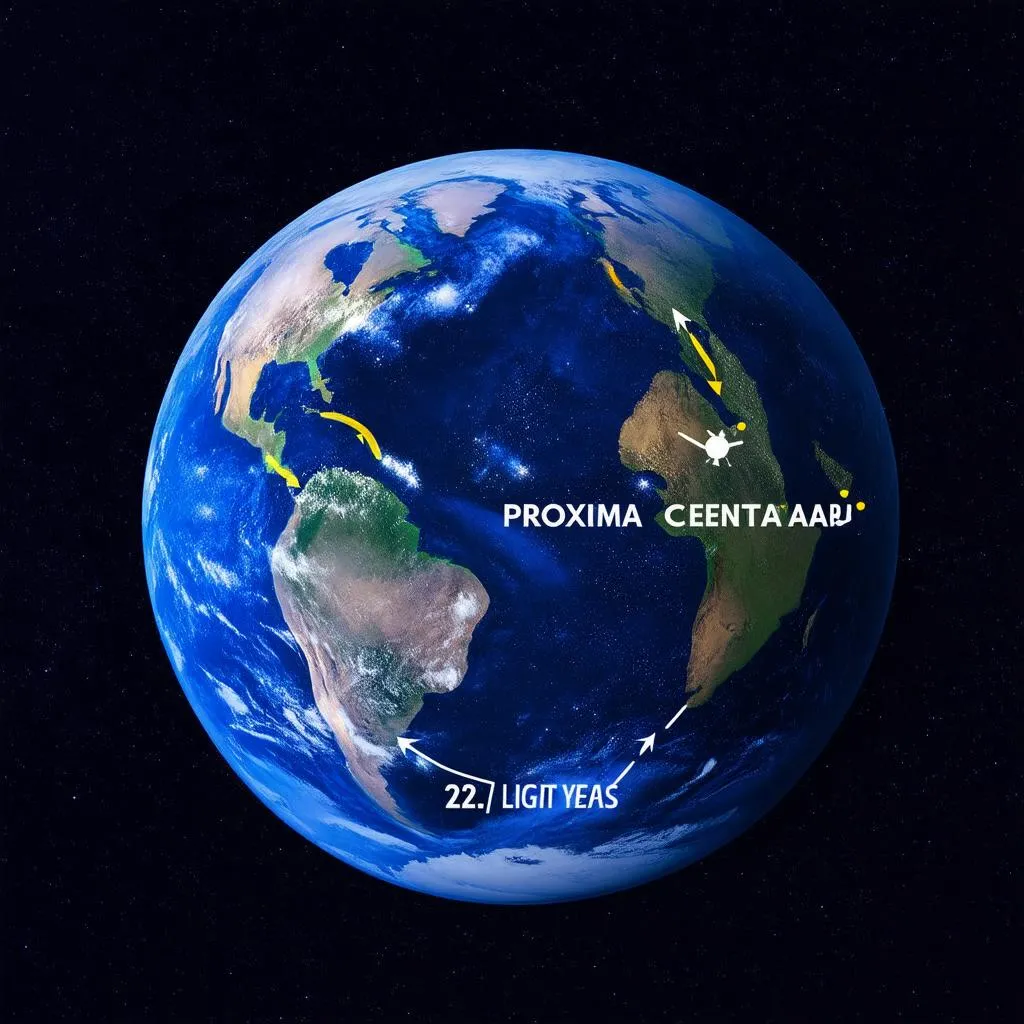Have you ever gazed up at the night sky, mesmerized by the twinkling stars, and wondered just how far away they are? We often hear distances to celestial objects described in “light-years,” but what does that really mean? Let’s take a journey into the cosmos and explore the incredible speed of light and the concept of a light-year.
Understanding the Speed of Light
Light travels at an astonishing speed of approximately 299,792,458 meters per second (about 186,282 miles per second). To put that into perspective, light could circle the Earth over seven times in just one second! That’s faster than any plane, train, or automobile…or anything else in the universe for that matter!
What is a Light-Year?
Despite its name, a light-year isn’t a measure of time, but rather a measure of distance. It represents the distance that light travels in one Earth year. To calculate a light-year, we multiply the speed of light by the number of seconds in a year.
- Speed of Light: 299,792,458 meters per second
- Seconds in a Year: 31,536,000 seconds (approximately)
Therefore, one light-year is equal to approximately 9.46 trillion kilometers (5.88 trillion miles). That’s a “9” with 12 zeros after it!
Why Use Light-Years?
The vastness of space requires a unit of measurement that can handle astronomical distances. Using miles or kilometers to describe the distances between stars and galaxies would result in incredibly large and unwieldy numbers. The light-year provides a more manageable and meaningful way to comprehend these cosmic scales.
Traveling at the Speed of Light: A Thought Experiment
Imagine we could build a spaceship capable of traveling at the speed of light. Let’s plan a hypothetical trip from Earth to Proxima Centauri, the nearest star system to our own, located about 4.24 light-years away.
- Destination: Proxima Centauri
- Distance: 4.24 light-years
- Travel Time: 4.24 years (traveling at the speed of light)
Even at the incredible speed of light, it would still take us over four years to reach our closest stellar neighbor! This highlights just how vast the universe truly is.
Light-Years and Looking Back in Time
When we observe distant objects in space, we are actually seeing them as they were in the past. The light from those objects has taken time to travel across the vast cosmic distances to reach our eyes. For example, when we look at the Andromeda Galaxy, which is about 2.5 million light-years away, we are seeing light that left that galaxy 2.5 million years ago!
Travelcar.edu.vn: Your Guide to Earthly and Cosmic Journeys
While we may not be able to travel at the speed of light (yet!), exploring our own planet is an adventure in itself! At TRAVELCAR.edu.vn, we can help you plan your next great escape, whether it’s a road trip along the scenic Pacific Coast Highway or a whirlwind tour of European capitals.
Did you know? The concept of Feng Shui, the ancient Chinese practice of harmonizing environments, can also be applied to travel. Choosing destinations with positive energy flow and arranging your travel itinerary in a balanced way can enhance your journey and promote a sense of well-being.
Frequently Asked Questions about Light-Years
Q: Is it possible to travel faster than the speed of light?
A: According to Einstein’s theory of relativity, nothing can travel faster than the speed of light in a vacuum.
Q: If we could travel at the speed of light, would time stop for us?
A: Time dilation, a consequence of Einstein’s theory, suggests that time would pass more slowly for someone traveling at speeds approaching the speed of light relative to a stationary observer.
Q: How do astronomers measure distances in light-years?
A: Astronomers use various techniques like parallax and standard candles to measure distances to stars and galaxies.
 Light Speed Around Earth
Light Speed Around Earth
 Proxima Centauri from Earth
Proxima Centauri from Earth
In conclusion, understanding the concept of a light-year allows us to grasp the vastness of the universe and the incredible speed at which light travels. It’s a reminder of the wonders that lie beyond our planet and the never-ending quest to explore the cosmos.
